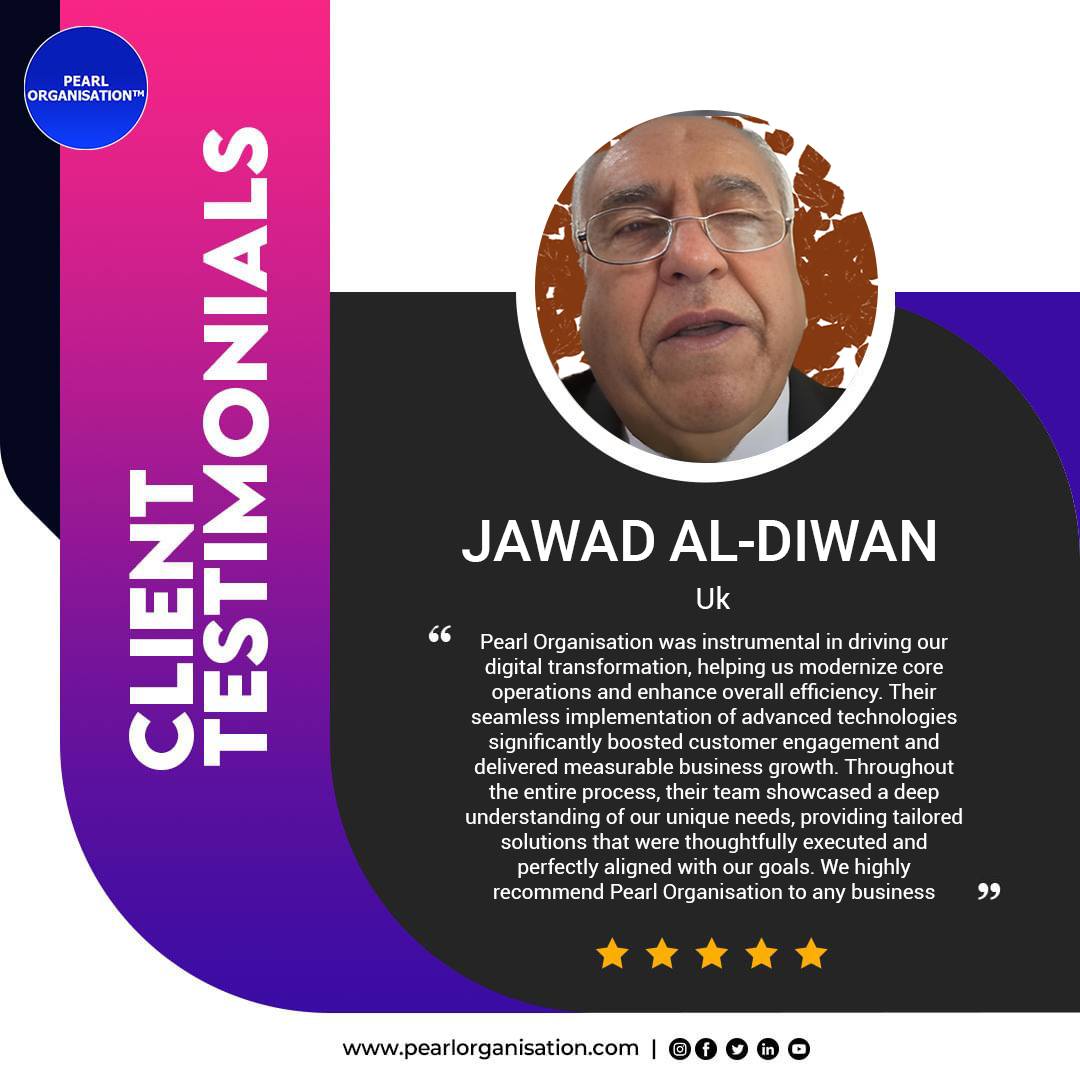How Digital Business Process Automation Minimizes Failures?
- Larrisa

- Sep 24
- 8 min read

Introduction: Why Businesses Struggle with Failures
No business sets out to fail. Yet, despite innovative ideas, skilled teams, and strong leadership, companies across industries often face avoidable setbacks — missed deadlines, lost revenue, compliance penalties, and customer dissatisfaction.
According to a recent McKinsey report, up to 60% of business failures are linked to poorly managed processes and human errors. The issue isn’t always strategy — it’s execution. Manual processes, disconnected systems, and inefficient workflows create gaps where mistakes thrive.
This is where Digital Business Process Automation (DPA) becomes a game-changer. By replacing repetitive, error-prone manual work with automated, intelligent workflows, businesses not only minimize failures but also accelerate growth, reduce costs, and improve customer trust.
Pearl Organisation has been pioneering automation solutions since 2017, helping clients in 150+ countries eliminate inefficiencies and achieve a 96% business success rate. In this article, we’ll explore how DPA minimizes failures, real examples of its impact, and why adopting it is no longer optional — it’s survival.
1. What Exactly is Digital Business Process Automation (DPA)?
DPA is not just “technology replacing people.” It is a strategic framework where business processes are digitally transformed to:
Unlike Robotic Process Automation (RPA), which automates single tasks, DPA is about end-to-end process transformation — ensuring workflows run smoothly from start to finish.
👉 Think of it as moving from a manual assembly line full of delays and mistakes to a smart digital assembly line where every action is tracked, optimized, and improved.
2. Why Businesses Fail Without Automation
Before we dive into solutions, let’s understand why so many businesses fail when they rely on manual systems:
Human Error – A simple typo in financial reporting can cost millions.
Process Delays – Manual approvals create bottlenecks and slow down execution.
Data Silos – Information spread across disconnected tools leads to poor decision-making.
Compliance Failures – Missed deadlines, wrong filings, or overlooked documentation cause penalties.
Lack of Visibility – Leaders can’t see real-time performance or identify bottlenecks.
High Operational Costs – Teams waste thousands of hours annually on repetitive, low-value work.
📌 Case Example: A logistics company suffered repeated delivery delays because shipment approvals depended on manual signatures. Customers left, costs grew, and revenue dropped.
👉 With DPA, such failures are replaced by automated, transparent workflows where approvals, scheduling, and tracking happen in real time.
3. How Digital Business Process Automation Minimizes Failures
3.1 Reducing Human Errors
Automated Data Entry ensures accuracy in financial records and customer databases.
Rule-based Approvals prevent wrong approvals or missed steps.
Error Notifications alert managers instantly when something deviates.
Impact: A finance team reduces reporting errors by 92% after automating reconciliations.
3.2 Speeding Up Processes
Workflows that used to take days shrink to hours or minutes.
Example: Employee onboarding — instead of 2 weeks of paperwork, digital workflows complete it in 48 hours.
Impact: Banks cut loan approval times from 10 days to 24 hours, winning more customers.
3.3 Increasing Transparency & Accountability
Every step is digitally tracked with timestamps.
Managers see real-time dashboards showing who did what and where delays exist.
Automated logs ensure nothing is hidden.
Impact: An insurance company reduced fraud claims by 67% with transparent, automated auditing.
3.4 Improving Customer Experience
Automated chatbots give instant answers, reducing response times.
Customers receive real-time notifications for orders, support, or payments.
Personalized automation ensures customers feel valued.
Impact: Retail companies see 35% higher customer retention with automation in support and loyalty programs.
3.5 Strengthening Compliance & Risk Management
Automated regulatory alerts ensure deadlines are never missed.
Digital audit trails prove compliance during inspections.
Automated data security measures reduce cyber risks.
Impact: Healthcare organizations maintain 100% HIPAA compliance with automated documentation workflows.
3.6 Cutting Operational Costs
Automation reduces workforce costs by eliminating repetitive tasks.
Payroll automation cuts HR costs.
Inventory automation reduces over-ordering.
Marketing automation lowers campaign expenses.
Impact: Businesses save 20–30% of operating costs annually with DPA.
4. Key Business Areas Where DPA Minimizes Failures
Finance & Accounting
Automated invoicing prevents double billing.
Smart fraud detection flags suspicious transactions.
Compliance reporting is handled automatically.
Human Resources (HR)
Employee onboarding becomes seamless.
Payroll automation prevents late or wrong salary disbursements.
Leave and attendance are tracked digitally.
Supply Chain & Logistics
Automated shipment tracking minimizes delays.
Inventory is updated in real time.
Vendor compliance is monitored automatically.
Customer Service
Chatbots reduce first response time.
Automated ticket routing ensures no requests are ignored.
SLA monitoring ensures service guarantees are met.
Sales & Marketing
Automated lead nurturing boosts conversion rates.
CRM + marketing automation ensures no follow-up is missed.
Data-driven campaigns lower acquisition costs.
👉 With Pearl Organisation’s DPA expertise, each department evolves into an error-free, agile, customer-focused function.
5. The Business Impact of Adopting DPA
When businesses implement DPA, the impact is measurable and immediate:
Cost Savings: Up to 30% reduction in operational expenses (McKinsey).
Faster Cycle Times: Processes complete 50–70% faster.
Higher Productivity: Employees spend 40% more time on strategic work.
Improved Customer Retention: Smoother processes create loyal customers.
Fewer Failures: Businesses report 80% fewer process breakdowns after adopting automation.
📌 Pearl Organisation Result: One global client reduced project delays by 63% and compliance failures by 78% within 9 months of automation.
6. Pearl Organisation’s Approach to DPA
Unlike generic automation tools, Pearl Organisation provides customized, enterprise-grade automation:
Process Discovery & Mapping
Identify failure-prone processes.
Map end-to-end workflows.
Automation Strategy
Define which tasks to automate.
Apply AI for predictive decisions.
Integration Layer
Connect ERP, CRM, cloud apps, and legacy systems.
Ensure smooth data flow.
Deployment & Training
Implement automation with minimal disruption.
Train teams to adapt quickly.
Continuous Optimization
Use analytics dashboards.
Monitor KPIs and improve regularly.
👉 This holistic approach ensures not just reduced failures, but also sustainable efficiency and growth.
7. DPA vs. RPA vs. BPM: The Clear Difference
Robotic Process Automation (RPA): Automates repetitive, task-level work.
Business Process Management (BPM): Provides a methodology for process improvement.
Digital Process Automation (DPA): Integrates both — automating end-to-end processes with intelligence.
Pearl Organisation combines RPA, BPM, and DPA for maximum business value.
8. The Future of Business with DPA
As businesses move into 2025 and beyond, automation will not just be an advantage — it will be a survival necessity.
Hyperautomation: Integrating AI, ML, RPA, and IoT.
Zero Failure Enterprises: Businesses operating with near-perfect accuracy.
Scalable Digital Growth: Expanding globally without adding chaos.
Predictive Automation: AI predicting issues before they occur.
📊 According to Forrester, by 2030, automation will cut business process failures by 80% worldwide.
9. Why Choose Pearl Organisation for Digital Process Automation
Unlike software vendors who provide only tools, Pearl Organisation provides full-stack transformation: strategy, technology, and continuous success management.
10. Conclusion: Turning Failures into Future-Ready Success
Business failures aren’t destiny — they’re symptoms of inefficient processes. Every missed deadline, wrong invoice, or failed compliance report is an opportunity to rethink and redesign workflows.
With Digital Business Process Automation, organizations minimize failures, maximize efficiency, and unlock growth opportunities that were once impossible with manual systems.
🚀 Don’t let inefficiencies define your future.
👉 Discover Pearl Organisation’s Digital Process Automation Services and join the global movement toward error-free, growth-driven businesses.
FAQs:
1. What is Digital Business Process Automation (DPA)?
Digital Business Process Automation (DPA) is the use of advanced technologies such as AI, machine learning, workflow automation, and cloud platforms to optimize and streamline business processes. Unlike simple task automation, DPA covers end-to-end workflows, ensuring fewer errors, faster execution, and real-time monitoring.
📊 According to Gartner, businesses that adopt DPA see a 30–50% increase in operational efficiency within the first year.
2. How does DPA minimize business failures?
Business failures often come from human errors, delays, compliance issues, and lack of visibility. DPA eliminates these by:
Automating manual approvals and data entry.
Providing real-time dashboards to track bottlenecks.
Enforcing compliance through digital audit trails.
Standardizing workflows across departments.
👉 Result: 80% fewer process breakdowns and significantly reduced financial losses (Forrester 2024).
3. What’s the difference between DPA, RPA, and BPM?
RPA (Robotic Process Automation): Automates individual repetitive tasks, like data entry.
BPM (Business Process Management): A methodology for analyzing and improving processes.
DPA (Digital Process Automation): Combines both — it digitizes entire workflows, integrates systems, and introduces intelligence (AI, analytics).
📊 Deloitte found that businesses using DPA instead of just RPA reduce operational risks by 45% more effectively.
4. Which industries benefit most from DPA?
DPA is industry-agnostic, but the impact is highest in:
Finance & Banking: Automated compliance reporting, fraud detection.
Healthcare: Patient data management, regulatory adherence.
Retail & E-commerce: Inventory automation, order tracking.
Logistics: Real-time shipment scheduling.
Human Resources: Automated onboarding, payroll accuracy.
📊 PwC research shows that 63% of executives in finance, healthcare, and logistics rank DPA as a top digital investment priority.
5. How much cost savings can automation deliver?
Businesses adopting DPA typically save 20–30% in operational costs within the first year (McKinsey).
Finance teams cut reconciliation costs by 25%.
HR teams reduce manual paperwork expenses by 40%.
Supply chains lower logistics costs by 18–22%.
👉 With Pearl Organisation’s DPA, many clients report ROI within 12–18 months.
6. Does DPA replace human employees?
No. DPA does not replace humans — it augments them. Employees spend less time on repetitive tasks (data entry, approvals, reporting) and more time on strategic, customer-focused, and creative work.
📊 A World Economic Forum study predicts automation will create 97 million new roles globally by 2025, even as it automates 85 million repetitive jobs.
7. How does DPA improve compliance?
Compliance failures are costly — GDPR fines alone crossed €1.7 billion in 2023. DPA reduces compliance risks by:
Automating mandatory reporting.
Keeping immutable digital audit trails.
Monitoring workflows in real time.
Sending proactive alerts for deadlines.
👉 Businesses using DPA cut compliance penalties by up to 70% (Capgemini 2023).
8. How long does it take to implement DPA?
Implementation time depends on the complexity of processes:
Small businesses: 4–6 weeks.
Mid-size companies: 2–4 months.
Large enterprises: 6–12 months.
📊 Pearl Organisation’s phased approach ensures minimal disruption — with measurable benefits visible in the first 90 days.
9. What are the risks of not adopting DPA?
Companies that delay automation risk:
Higher failure rates in processes.
Loss of customers due to delays.
Regulatory fines.
Rising operational costs.
Falling behind competitors who are already automating.
📊 Accenture found that businesses 20% behind in automation adoption face up to 3x higher operational failures than peers.
10. How does DPA impact customer experience?
Customers today expect speed, accuracy, and transparency. DPA delivers by:
Automating order tracking and delivery updates.
Providing instant responses via AI chatbots.
Personalizing customer communication.
📊 Salesforce reports that 88% of customers are more loyal to companies that offer proactive service enabled by automation.
11. Is DPA suitable for small and medium businesses (SMBs)?
Absolutely. Automation is not just for enterprises. SMBs benefit through:
Lower admin costs.
Faster customer service.
Scalable growth without hiring large teams.
👉 Pearl Organisation offers flexible automation packages tailored for SMB budgets.
12. What ROI can I expect from DPA?
ROI varies by industry but averages 2x–5x within 18 months.
Increased sales conversions.
Reduced process delays.
Lower compliance fines.
Higher customer retention.
📊 Gartner predicts that by 2026, 70% of organizations implementing DPA will recoup their investment in less than 2 years.
13. Can DPA integrate with existing tools like ERP, CRM, or HRMS?
Yes. Modern DPA platforms are designed to integrate seamlessly with ERP systems (SAP, Oracle, Pearl ERP), CRMs (Salesforce, Zoho), HR tools, and even legacy systems.
👉 Pearl Organisation specializes in end-to-end integration, ensuring smooth workflows without expensive replacements.
14. How does DPA support scalability?
As your business grows, manual processes break down. DPA enables scalable workflows by:
Handling larger transaction volumes automatically.
Standardizing processes across multiple branches or geographies.
Supporting global compliance needs.
📊 IBM reports that automated enterprises scale 3x faster without increasing headcount proportionally.
15. Why choose Pearl Organisation for DPA over generic software vendors?
Most vendors sell tools — Pearl Organisation delivers complete transformation.
18,000+ projects delivered.
150+ countries served.
96% client success rate.
👉 Clients don’t just buy software — they gain a strategic partner that ensures automation delivers real business outcomes.




































